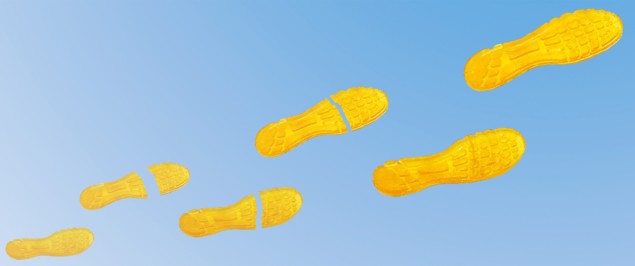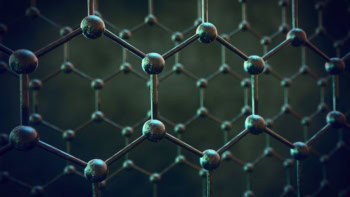
Scientists in the US have designed a new polymer that can “self-heal” fractures in just a few hours. Objects made from this material restore their shape and elastic strength after self-repairing critical damage, the researchers found. What’s more, they can quickly print structures made from the material in 3D, which could benefit businesses by speeding up manufacturing times and allowing products to last longer.
Polymers that can self-repair fractures and retain their original strengths have long been of interest to scientists, with existing self-healing materials being used in many areas such as flexible electronics and biomedical devices. However, these materials have been limited because it takes time to make them and there are no effective methods for building complex 3D structures, such as those found in nature, from these polymers.
No shrinking
A team of researchers from the University of Southern California and the University of Connecticut, US, have now addressed these limitations by designing a new elastic material that can be rapidly 3D printed in any structure with swift self-healing properties. After testing objects they produced from this elastomer, the scientists uncovered two surprising advantages of the material.
First, it does not appear to shrink in volume even after repeated breaking and healing. This sets it apart from most self-healing hydrogels, popular in medical applications. Second, its mechanical properties do not change even after being soaked in water, which makes it better than moisture-sensitive elastomers with hydrogen bonds.
The new elastomer starts off as a fluid containing lots of thiol groups (R-S-H) that form a long-chain polymer when exposed to light. This photopolymerization reaction allows elaborate, solid structures to be 3D printed simply by separating a model of the desired object into a sequence of images and projecting these onto a bath containing the liquid “ink”. The team used to the method to print structures with a resolution up to 13.5 µm at a rate of 13.5 cubic millimetres per minute.
The healing property of the printed objects comes from the disulphide groups (R-S-S-R’) in the elastomer ink. When the material is broken, the disulphide bonds – with the help of diffusion – reform across the interface of the material fracture and restore its original form.
Staying flexible
The researchers tested the elastic strength of their materials by using the technique to make identical dog-bone-shaped samples, which they then cut in half. After putting the pieces back in contact and leaving them for as little as an hour at 60 °C, the researchers found that the material had regained 100% of its original’s strength – confirming that the object had entirely repaired itself.
What’s more, after 10 repeated break-heal cycles the material’s strength did not fall below 90% of its original value. And as the self-healing is governed by diffusion, it speeds up with temperature, although the material can heal effectively even at ambient conditions.
By mixing carbon grease with the elastomer ink, the scientists also managed to make a conducting printed pad. The resulting self-healing force sensor can restore both its mechanical and conductive properties even after being broken. Qiming Wang from the University of Southern California shares the team’s surprise that the resistance of the printed pad changed by only 9% after healing a fracture. Wang believes the new material could not only be used for making novel self-healing shoes and vehicle tyres, but also in 3D printed flexible electronics.
Full results are published in NPG Asia Materials.



